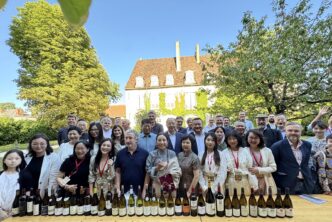see also: “Italian Small Lot Batch Wines, part 2”
In Wine Too, Sometimes Less Is Really More
by Ian D’Agata
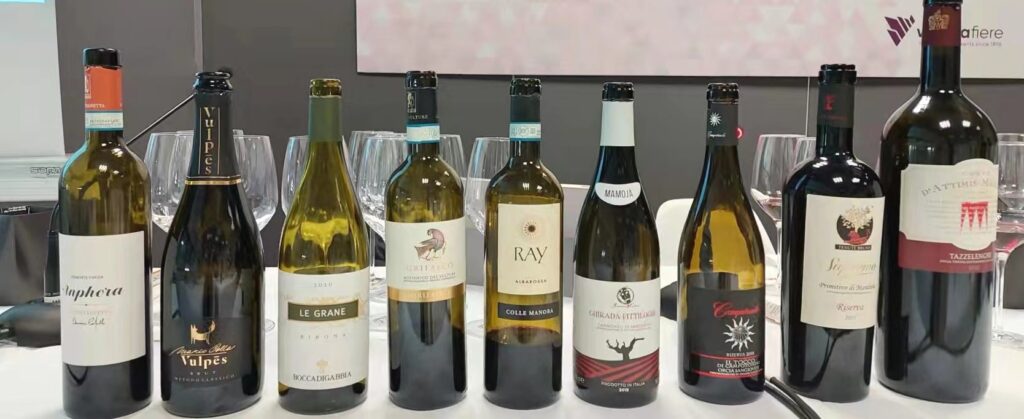
I have been following Italian wine for longer than I care to remember. But despite this rather unfortunate passage of time, it has been a wonderful journey, one in which I have learned a great deal and thanks to those life lessons probably became a better person for it. I am very proud to have been asked by Vinitaly to create and organize something for them that might help broadcast and deepen the understanding and knowledge of Italy’s many great grapes, wines, territories and the people who make them.
I have always thought and believed that among Italy’s greatest strengths in wine is the country’s incredible wealth of native grapes as well as the immense diversity of its territories. So, on the one hand unique indigenous grapes that give wines boasting colours, aromas and flavour that cannot be duplicated elsewhere; and on the other, great wines made from international grape varieties (those grown all over the world) but that thanks to the extreme differences in geology, climate, microbiology, exposure, topography of the Italian peninsula also allow for wines unlike those of any other wine region or country. All this without forgetting for a moment the importance of the human factor, those many families that through patience, passion, study and sheer hard work preserve these grapes and territories broadcasting their merits to the world. At the cost of repeating myself, I will stress once again, because it really is an important message, that it is this combination of biological, physical, chemical and human factors that are at the core of the world-class wines that Italy produces routinely. Who forgets that is lost.
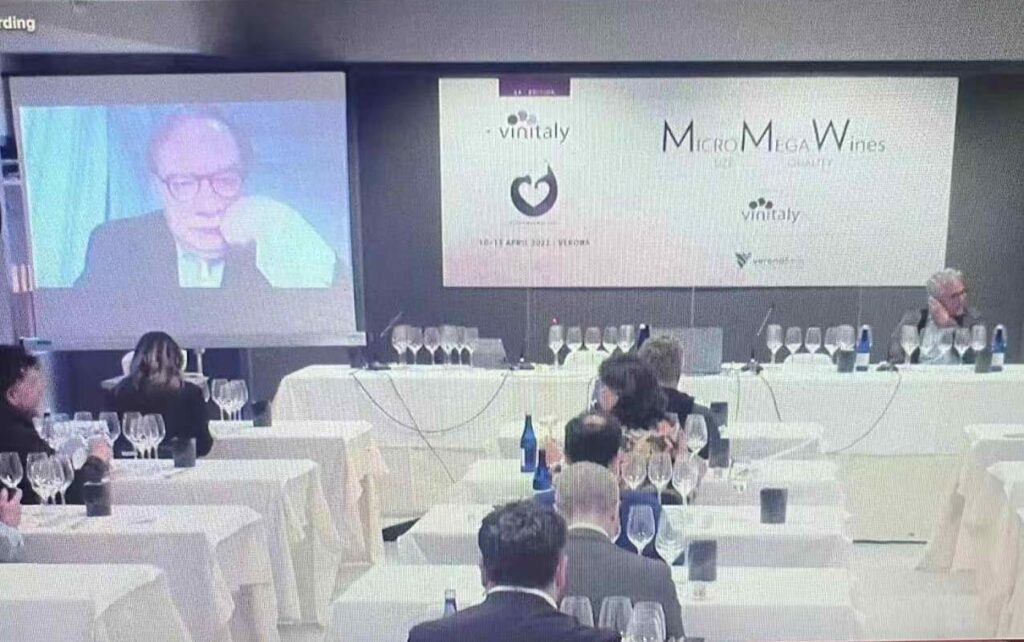
In the specific case of the small-batch wines presented at MicroMegaWines, all this is true and then some. In the spirit of “less is more”, I chose to present absolutely unique wines, made in very small volumes. But beware: this does not mean “small” for small’s sake. MicroMegaWines wants to recognize that being small by itself is not automatically associated with higher quality, just as something that is made by an “artisan” is not necessarily always better than what is made by a larger outfit. Rather, what oftentimes turns out to really count most is the will to do well; that is, the willingness and the desire to study the past while taking stock of the present and looking at the future. In so doing, a trace is inevitably left, a path even, that others might wish to follow one day.
And so, MicroMegaWines was an event about small estates that cannot produce big volumes of wine even if they wished to do so, but at the same time also about big estates that are quite capable of producing big volumes but that choose to also engage in the production of small volume wines that have a specific message to relate. And so from Piedmont to Veneto to Emilia-Romagna to Sicily to Sardinia; from Albarossa to Freisa, from Dorona to Tazzelenghe, from Cabernet Franc to Maceratino, from Susumaniello to Zibibbo, and many others; from the Langhe to Venice and its lagoon, from Friuli Colli Orientali to Bolgheri, from Marche to Puglia, from Pantelleria to Mamojada and many other beautiful magical places, Italy’s many excellent small-batch wines offer a journey of discovery of some of the world’s most unique wines and the men and women behind, and in front of, them. A selection of wineries that are amongst Italy’s best, but by no means complete, as there are many many other small Italian wineries that produce outstanding wines, but I have to start somewhere. For the time being, we’ll address the wines of these twenty-five and two producer associations unknown to the majority of the public-at-large, but that make truly wonderful, oustanding wines. In the future, I will no doubt discover more new wineries that 90% of people have never heard, because hitting the vineyards, talking to the people living there and making the wines, defenderrs of the local grape varieties or knights in shining aromour out to express the specific terroirs by the use of international grapes, it’s all good, and has always been the one constant in my life. Cheers!.
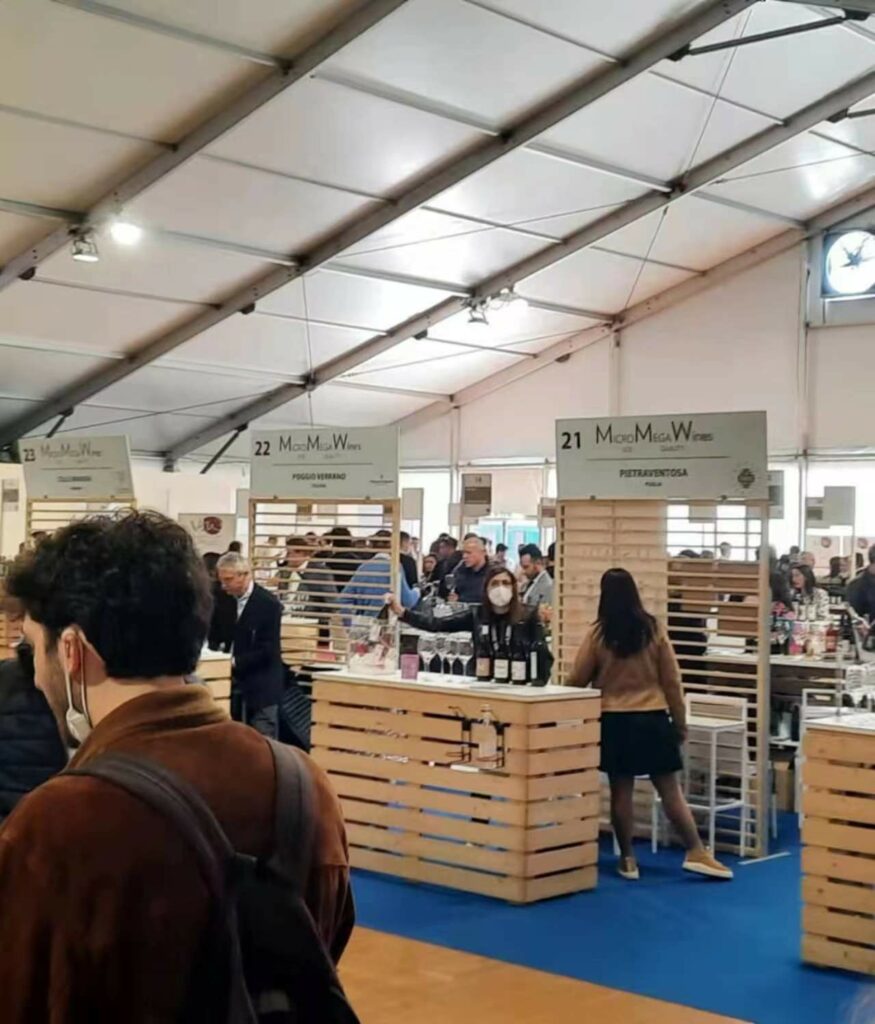
My First Day at MicroMegaWines
by Michele Longo
So exciting and so very happy to be part of the first edition of MicroMegaWines, the new thematic wine area created by Ian D’Agata two years ago for Vinitaly/Veronafiere, along with Gianni Bruno and their team with whom Ian has been collaborating with for many years now. The first day of MicroMegaWines (MMW) was exciting and, like all the first times of a new initiative, full of surprises. I was there for the full three days, the man on the ground so to speak, given that Ian was stuck in a total lockdown in Shanghai and could be present only by zoom for the daily MMW Masterclasses featuring each day nine wines so as to cover all twenty-seven estates that Ian had accepted to MMW.
Like all Vinitaly this year, the section dedicated to MMW, inside Pavilion F, was been well organized, bright, spaicous and airy (and in times of Covid, this aspect is very important). The stands of the producers were very-well spaced (something that Ian, who was in direct contact by email and social media with the MMW producers throughout the days of the fair, told me a number of them had made a point of telling him how much they appreciated) to facilitate access for visitors. Walking among the stands, interviewing the producers, tasting their wines, hearing their stories, finding out why they joined this project and which of their wines best embodies the spirit/motto of this new project (MicroMegaWines, or Micro Size and Mega Quality Wines) was very interesting.
Here is a rundown of my highlights at each stand.

Podere Sabbioni (Marche)
Massimo Carletti and his wife Maria Grazia are two personalities from the world of wine that are worth knowing. Talking with them is a pleasure, they transmit a great passion for their work and for their territory. Among the wines they presented, my favourite one (my “one bottle is not enough” wine) is: Ribona della Famiglia Bio Colli Maceratesi 2020, the same wine they chose to present at the Masterclass and the wine they believe best expresses the motto of this event. A wine with a great character, with an enticing aroma and flavour profile. More structured and rounded compared their “entry-level” Ribona 2021, which is more vertical and fresher (a wonderful wine too, and another candidate for my award “one bottle is not enough” wine).

Boccadigabbia (Marche)
In recent times, the estate has had deserved success with their Ribona wine, made with the local high quality Maceratino variety. Among the wines they presented, my favourite one (my “one bottle is not enough” wine) is: Ribona Le Grane 2020 (also the wine presented at the Masterclass). A wine with a great concentration/complexity of aroma, flavour and texture. Very good also the “entry-level” Ribona 2021.

Campotondo (Tuscanay)
This estate is equally successful with international and native grapes. Among the wines they presented, my favourite one (my “one bottle is not enough” wine) was All’incontro 2016 (90% Colorino del Valdarno, 10% Sangiovese), an intriguing outcome of their experiments carried out on Colorino grape varieties vinification. They bottle this wine only in the worthiest vintages in limited numbered editions (practicaly, once every two or three years). Good depth of colour, impressive aromas and flavour profile. The texture is extremely velvety and refined with a long finish, a rarity in Colorino wines which are often very tannic ad marred by green streaks This is excellent. Very good also the Il Tocco Riserva 2018 (here the blend is the opposiute of the preceding wine: 90% Sangiovese, 10% Colorino del Valdarno) the wine they chose to show at the Masterclass of Day1.

Colle Manora (Pidmont)
Talking to Marina Orlandi Contucci was a pleasant experience. Her wines reflect her character: elegant, refined, straightforward. Among the wines they presented, my favourite one is: Albarossa Ray 2019, the same wine they believe best expresses the motto of this event. Albarossa is a laboratory crossing of Barbera and Nebbiolo di Dronero (Chatus), and this is really one of the best I’ve ever tasted, that reflects the characters of the grape: intense ripe red cherry and spicy tobacco and black pepper notes, refined and balanced, with a pleasant lingering aftertaste on the palate. Very good also the Barbera d’Asti Superiore Manora 2019, from old-vines, wraps the palate up with sweet red berries, licorice and spices. Smooth tannins, fresh, juicy, with fruity and spicy notes on the finish.

Commenda Magistrale (Puglia)
Located in the area of Maruggio, a few steps from one of the most beautiful beaches of Salento, in the center of the Primitivo di Manduria production area, the Tenute Bruno estate has a “flagship” wine in their Primitivo di Manduria Riserva Supremo 2015 and also my favourite wine of theirs. Ripe red cherry, strawberry jam, macerated plums, balsamic hints and sweet spicy notes. Smooth yet fleshy, with a long finish reminding fruity notes. Very good also is Palù Primitivo di Manduria.

Del Poggio (Friuli Venezia Giulia)
I love Pinot Bianco wines and as Ian D’Agata has written and said many times before, FVG makes some of the world’s top Pinot Bianco wines. The Vulpes Brut “Mario Colla” Metodo Classico Pinot Bianco, made by Alessandro e Cristina Colla is an exciting Metodo Classico bubbly (made therefore by secondary fermentation in the bottle) but my favourite wine of theirs turend out to be the Vulpe Passum 2017 (made with the Verduzzo Friulano grape variety): it is a pleasant passito (a wine made with air-dried grapes), fresh, mineral, with a good acidity, balanced and refined, not at all cloying, … in short, in a world where passito wines have a hard time, this is good in its own way and very food-friendly. Try it with desserts for sure such as cstard pastries, fruit tarts and cocktailsm, or just almond cookies, but this is so nicely lively and not overly sweet that it will match well with pumpkin ravioli and oven-baked nutmeg-accented butternut squash, for example.

Francesco Cadinu (Sardinia)
This was one of my personal highlights and real surprises of this edition of MMW 2022: I never cease tobe amzed how Ian D’Agata is able to ferret out producers that nopbody has ever heard off, and honestly, this is one of them. Nobody, and I mean nobody I talked to prior to the show knew anything about this estate (and why would they, given the winery makes only 7000 bottles a year). ….but, but, but, but boy oh boy were we all missing something! It was the first time I tasted the wines of this truly MicroMegaWines estate: truly ‘micro’ in volume abut very ‘mega” in quality. Really, I’d say this is an outstanding estate. Hard to say which one of their wines was my favorite, and even harder to choose just two from the bunch. If I must choose then my “one bottle is not enough” wine is the Cannonau di Sardegna Ghirada Fittiloghe 2019, (together with Teularju Cannonau Ghirada Cara’Gonare truly one of the best Cannonau wiens I’ve ever tasted), made from grapes picked at 700 meters above sea level from 120 years old vines, only 1,000 bottles for hectare, an outstanding Cannonau no matter which way you look at it. Very good also the Mattìo, made with Granatza, an abandoned native white grape: deep, warm, mineral, rich of reminds of the Sardinia terroir.

La Montagnetta (Piedmont)
What else to say about La Montagnetta owner Domenico Capello that hasn’t already been said? Suffice it to say that for everyone he is simply Mr. Freisa (but his Barbera d’Asti Piovà is also very good). Among the Freisa he presented at MMW 2022 my favourite one is the Freisa d’Asti Superiore Bugianen 2018, everything you want from a good Freisa wine can be found in this bottle, archetypical aroma and flavour profile (sour red cherry, red rose, tobacco), a lot of fragrances and freshness (that other varieties, Nebbiolo aside, just can’t match!), high acidity with and high tannins (but refined, at elast in the case of La Montagnetta’s wines). No doubt: it’s my “one bottle is not enough”. Very good also the wine Domenico believes best expresses the motto of this event (presented also in the first Masterclass): the Piemonte Freisa Anphora 2019, fresher (and younger) than the Bugianen, an intriguing new version of this underrated grape.

Le Vigne di Silvia (Tuscany)
The first thing that Silvia tells you when you talk to her is that she is lucky because she has managed to make her two dreams come true: playing football (soccer in the USA) at a high level and producing wine in her homeland with her sister. Her wines reflect the passion with which she faces life. Hard to say which was my favorite wine of the group, because her three wines were all very good. The wine they believe best expresses the motto of this event (presented in the Masterclass), Itinerante Toscana 2019 (Cabernet Franc 100%) is really an enticing wine, elegant and refined, that perfectly reflects the Silvia’s wine philosophy. It’s also my favourite one, even though the Giochessa 2021 (Vermentino 100%) is in “second place” only by a whisker. It offers a really enticing aroma profile, with pleasant citrusy notes and a hint of herbs. Savory, fresh, marine, with a long finish oand repeating citrus notes on the long abck end, it’s just a perfect wine for the summer ahead.
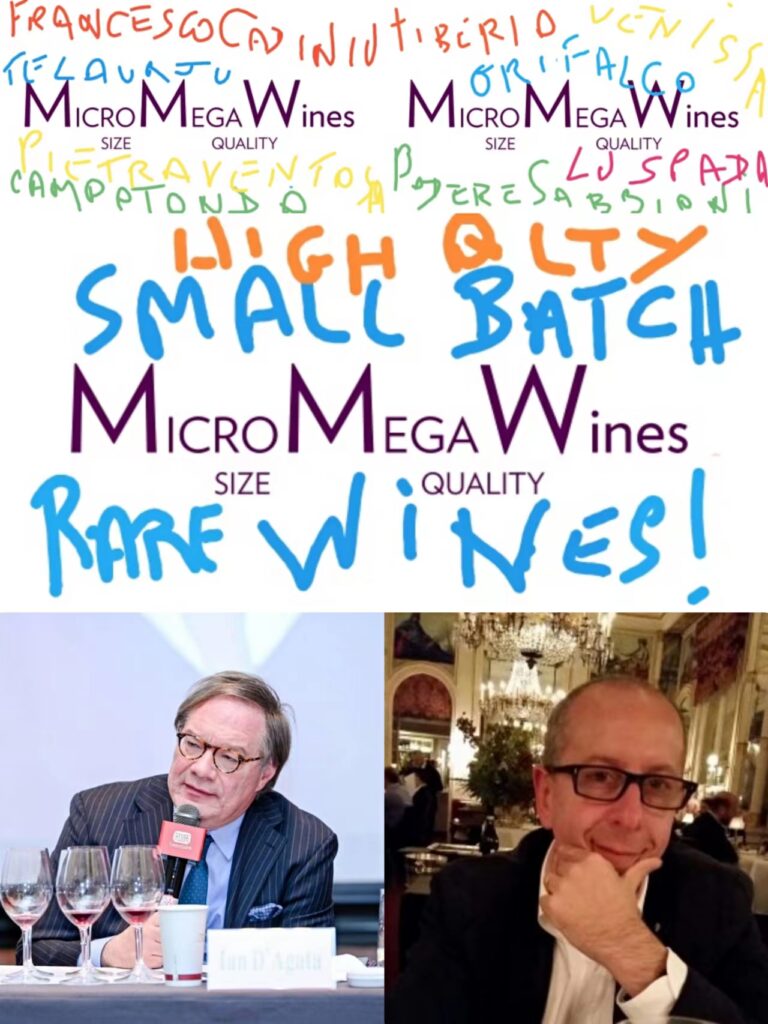

 中文
中文
